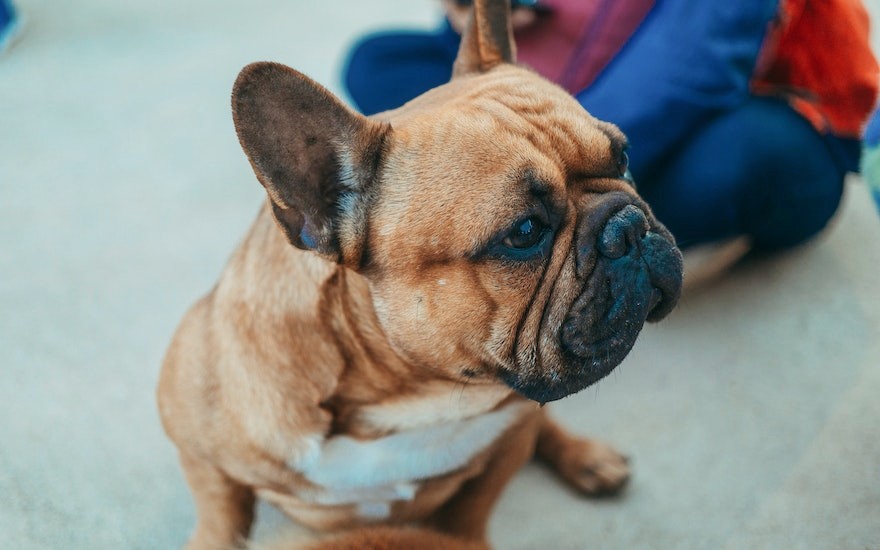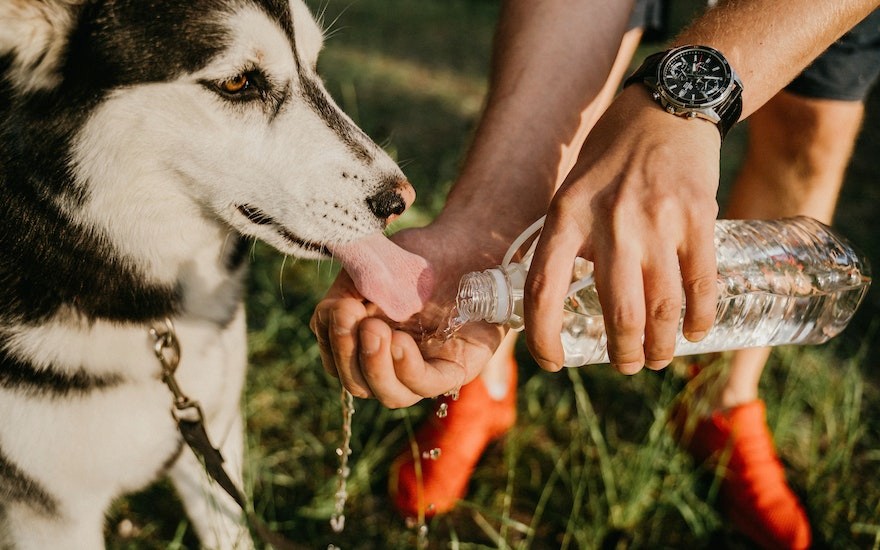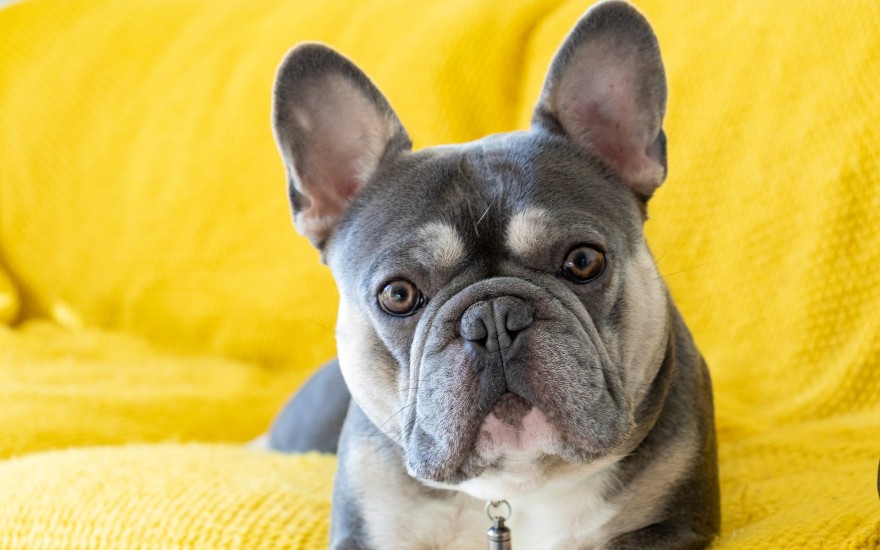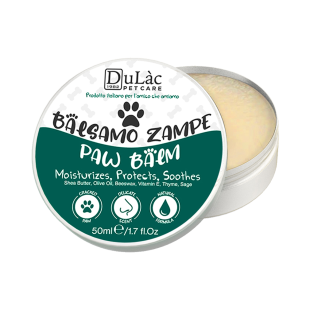Why has your dog got a dry nose and in which cases may this be considered an indicator of a disease
It is commonly known that the nose of a healthy dog should be moist and hydrated, while a dry nose may be a clear symptom of a disease, such as the much dreaded Leishmaniasis.
Actually (and fortunately), dryness and dehydration of the so-called 'truffle' are not always a sign of a health problem but, rather, an indication of something much simpler and solvable.
One thing is certain: a dry nose, which cracks very easily, can become a major problem for our four-legged friends.
Causes of a dry nose in dogs

A dog's nose is moist because it is covered with a thin layer of mucus, which helps the animal to smell. The truffle is often very wet: in fact, dogs do not have sweat glands like us, but sweat from their noses and paw pads.
As a rule, the so-called 'truffle' should always be moist, although certain situations may cause it to dry out. Some are worrying, others much less so.
Here are the most common causes of a dry nose in dogs:
- the cold: just like our skin, dogs' skin can also suffer from low temperatures and temperature changes, and crack as a result. The skin of the animal's nose and pads is the most exposed to cold and frost. It is therefore no coincidence that vets often recommend the use of a dog’s nose balm during the winter period;
- heat and dehydration: dogs' noses can become chapped and dehydrated due to high temperatures (not only in the summer months but also in the winter, due to heating, low humidity levels and exposure to the sun;
- Allergies: animals can suffer from allergies, including contact allergies, which can manifest themselves in the form of rashes both on the nose and on other parts of the body;
- Older age: some older dogs tend to have dry skin and develop dermatitis much more easily than younger individuals;
- Genetic predisposition: some dog breeds are predisposed to having a dry nose. In particular, it is brachycephalic dogs (i.e. with a skull that is more developed in width than in length) that are more prone to nasal problems, e.g. narrower-than-normal nostrils, dermatitis and breathing difficulties, which also lead to dehydration and cracking of the nose. Among the most common brachycephalic breeds are French Bulldogs, English Bulldogs, Pugs, Boxers, the Pekingese, the Cavalier King Charles Spaniel, the Shar-pei, the Dogue de Bordeaux, the Bullmastiff and many others;
- Diseases and deficiencies: - diseases and deficiencies: hyperkeratosis, zinc deficiency, autoimmune diseases, distemper, leishmaniasis and other disorders can also manifest themselves in the thickening of the nose skin.
That said, if your dog has a dry nose try to remember how long he has had this problem for? A few hours? A few days? A few weeks? Has he spent time in the sun or near a heat source, such as a heater?
Has he taken a walk in the winter cold?
Hasn’t he had a drink for a few hours?
Often, the cause of a dry nose is nothing really worrying, but rather a temporary and easily solved condition. There are cases, however, when it would be better to take your four-legged friend to the vet.

When should we worry if our dog has a dry nose?
Dry skin on the nose may not be a problem if it is the only symptom your dog is showing or if the condition disappears in a short time.
If, however, your dog shows symptoms of discomfort (such as tiredness and lack of appetite), or has cracked skin elsewhere on the body, then it would be best to take him to the vet for a consultation.
To dispel some of your doubts and, hopefully, also some of your worries, here are the main symptoms of the canine diseases mentioned above, which can lead - but are not limited to - a chapped nose:
- hyperkeratosis: this condition often affects both the nose and the fingertips and manifests itself in a severe thickening of the skin (which also leads to cracking and other problems). The skin of the nose is therefore both dry and much thicker than normal;
- zinc deficiency: visible symptoms of zinc deficiency include diarrhea, lack of appetite, hair loss, dermatitis on the nose, mouth, around the eyes and fingertips, and convulsions. Other symptoms, only detectable after a veterinary examination, are thyroid gland dysfunctions and renal, hepatic and cardiac insufficiency;
- autoimmune diseases: among the most frequent symptoms of autoimmune diseases in dogs there is a medical condition known as lethargy, which encompasses lack of energy and appetite, weight loss, diarrhea, skin ulcers and scaling on the nose, ears, mouth and paws;
- distemper: in addition to dermatitis on the nose and other parts of the body, distemper can manifest itself with lack of appetite, fever, vomiting, diarrhea, coughing (and other respiratory problems), weight loss, tremors and much more;
- leishmaniasis: the most frequent symptoms of leishmaniasis are severe tiredness, swollen joints, abnormal nail growth, lack of appetite, weight loss, eye problems (including conjunctivitis and retinitis), nosebleeds, dermatitis and hyperkeratosis concentrated on the dog's nose and fingertips.
Does your dog present any of these symptoms or, more generally, does his dry nose seem a rather strange condition to you? If so, we advise you to see your vet or veterinary surgeon to get their opinion and, if required, schedule some tests.
If, on the other hand, the dry nose is just temporary or genetic condition, then you can do something to relieve your four-legged friend.
Natural remedies for your dog's dry nose
If your dog is predisposed to truffle dryness or has been affected by high/low temperatures, you can adopt specific behaviors that can help him:
- To provide your dog immediate relief, moisturise his nose using a specific product, such as Dulàc Dog Nose Balm. Caution: do not use creams for human use, as dogs lick their noses and could ingest potentially harmful products. Specific products contain natural ingredients that are non-toxic to pets;
- protect your four-legged friend's skin with sunscreen before summer walks;
- use a moisturising cream or butter specifically developed for dogs' noses after walks, paying particular attention during summer and winter. In this connection, we recommend that you also moisturise your dog’s the fingertips (which, like the nose, may be affected by changes in temperature) with Dulàc Paw Balm;
- use steel bowls, which can be easily washed, so as to avoid bacterial proliferation and possible allergies from contact with plastic;
- make sure that your dog drinks enough, especially during the summer period, and always has fresh water available.

Conclusions
A dog's chapped nose, or simply a dry nose, can depend on numerous factors.
Very often it is a temporary but potentially annoying condition. It can therefore be treated by using a specific moisturising cream and taking appropriate measures.
If accompanied by other symptoms, such as debilitation and lack of appetite, dryness of the nose could be a sign of a canine disease.
Only a veterinary doctor can best analyze the situation: if you have any doubts, consult him without fear of overdoing it!
Sources:
Kokocińska-Kusiak A, Woszczyło M, Zybala M, Maciocha J, Barłowska K, Dzięcioł M. Canine Olfaction: Physiology, Behavior, and Possibilities for Practical Applications. Animals (Basel). 2021 Aug 21;11(8):2463. doi: 10.3390/ani11082463. PMID: 34438920; PMCID: PMC8388720
https://www.gruppoleishmania.org/en
https://vcahospitals.com/know-your-pet/why-do-dogs-have-wet-noses
Disclaimer: the information provided in this article represents general indications and in no way replaces medical advice.

